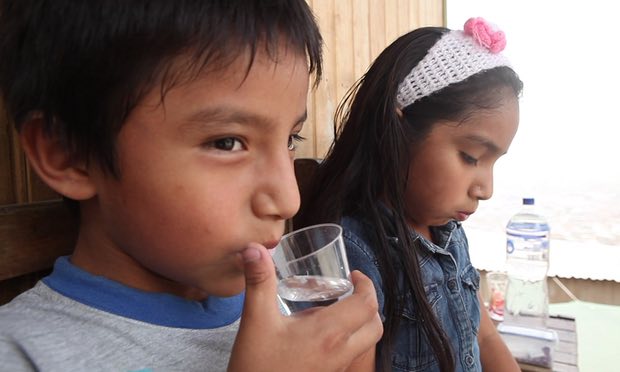Lessons from Peru about stopping the spread of TB?


Just a sheet draped over a washing line separates their sleeping area from that of their 20-year-old brother, Jose, a tuberculosis sufferer. The whole family, their mother and an older sister with an infant baby, live in shack on a hill overlooking the sprawling Carabayllo slum. It is a tuberculosis hotspot where the overcrowded, poorly-ventilated and often damp homes provide a breeding ground for one of the world’s most ancient diseases, which recent research shows claims 1.8 million lives a year globally, not the 1.5 million it was previously thought.
Peru has the highest incidence per capita of tuberculosis in the Americas, including virulent multi-drug resistant (around 2,300 patients per year, 35% of all cases in the region) and extensively drug resistant (around 100 patients per year, 75% of all cases in the region) strains. Its reduction is slow at around 1.5% a year, just short of the global reduction of 1.65% annually, according to the World Health Organisation (WHO).
The rate of reduction would need to increase to a 4-5% annually, in order to reach sustainable development goal target 3.3 – ending epidemics of tuberculosis and other infectious diseases by 2030.
The WHO admits this is an ambitious aim. It said in a statement last year: “While there has been significant progress in the fight against TB, with 43 million lives saved since 2000, the battle is only half-won: more than 4,000 people lose their lives each day to this leading infectious disease. Many of the communities that are most burdened by tuberculosis are those that are poor, vulnerable and marginalised.”
But as well as being one of the hotspots for the disease, Peru has some of the world’s highest cure rates for tuberculosis at 87% for all new cases and the extremely drug resistant strain (XDR-TB) at 66% in 2013. The global reduction rate for multi-drug resistant tuberculosis (MDR-TB) is around 52% and is just 28% for XDR-TB.
“Search, treat, prevent – that’s our approach,” says Carmen Contreras of US-based charity Partners in Health. “We go to the patients’ houses and we find the best way on ensuring they don’t abandon the treatment.” The WHO’s End TB hands-on approach has been implemented since 2015 and it is reaping rewards in Peru.
Decades on the streets as a drug addict smoking unrefined cocaine left 56-year-old Francisco Verastegui’s health in ruins. He became HIV positive then found out he had tuberculosis. Now off the streets in a homeless shelter run by an evangelical church, Verastegui says he has cheated death more than once. “I’ve abandoned the treatment on several occasions in the past but I didn’t die so I know that God must have a purpose for my life,” he says, taking his daily dose of pills.
Partners in Heath works with several thousand patients in Peru and has seen the number of people who abandon treatment reduce from 7-8% to less than 1%. The secret of their success is training local health promoters in the community itself, says Leonid Lecca, the NGO’s director in Lima: “They come from the same community; they know who the coughers are, who has lost weight, who’s hiding because they have problems. They find those people who sometimes never reach the health services.”
The NGO’s aim for 2017 is zero deaths and zero abandonment of treatment. A quick and accurate diagnosis is key to achieving this. So Partners in Health built a state-of-art tuberculosis detection laboratory in an old shipping container in the heart of this deprived community. It’s been operating in Carabayllo, in northern Lima, since 2012.
Taking patients like Julia Roque, 53, through the lengthy treatment for multi-drug resistant tuberculosis is part of the job for Contreras at Partners in Health as she strolls arm-in-arm with her patient. Roque caught MDR-TB while being treated in hospital for diabetes.
Recovery is arduous. She is too weak to continue her work as a street vendor and lack of money to support herself and her family is constant worry, says Roque. “To recover you have to be determined, strong and have plenty of willpower otherwise you won’t get better,” she says. “If you quit the treatment then only God will gather you up.”
Accompanying patients on the road to recovery with consistent moral support is how Peru is leading by example. Perhaps the rest of the world can follow in its footsteps to make a dent on the global epidemic.e lab is the only one of its kind in Latin America and can make 25 diagnoses a day. This is a big boost for Peru’s strained healthcare services, says its head, Roger Calderon: “The diagnosis is very important because the patient often doesn’t know what’s wrong with them. A quick and opportune diagnosis is best way to control tuberculosis but the problem is not just a medical one, it’s a social one. While there’s poor and needy people, there will be tuberculosis.”
The Guardian | Dan Collyns





